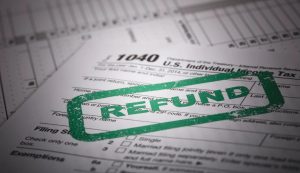National Insurance Contributions Self Employed | Rates and Costs for 2025
Are you self-employed and curious about how National Insurance (NI) contributions will impact your finances in 2025? With new updates to rates and thresholds, understanding your NI obligations is more important than ever.
Whether you’re a seasoned business owner or just starting out, knowing how these changes affect your earnings can help you avoid surprises and plan ahead.
But what exactly determines your NI contributions, and how might they influence your state benefits? From contribution types to payment methods, there’s a lot to uncover.
In this guide, we’ll walk you through everything you need to know to stay informed and in control of your finances.
What Are National Insurance Contributions?

National Insurance Contributions (NICs) are payments made by workers and employers in the UK to fund essential state benefits, including, the State Pension, Maternity allowance, Employment and Support Allowance (ESA), Bereavement benefits.
For self-employed individuals, NICs help build qualifying years for the State Pension and other benefits.
Unlike employed workers, self-employed individuals do not have an employer handling NI deductions, so they must calculate and pay NICs themselves.
There are two main types of NICs for self-employed workers:
- Class 2 NICs: A flat weekly rate paid by those earning above the Small Profits Threshold (SPT).
- Class 4 NICs: A percentage of profits paid by those earning above the Lower Profits Limit (LPL).
Paying the correct amount of National Insurance ensures you receive state benefits and pension entitlements. Understanding the rates and thresholds is crucial for budgeting your taxes correctly.
Why Do Self-Employed Individuals Need to Pay National Insurance?
Self-employed individuals must pay NICs to contribute to the UK’s social security system and qualify for certain state benefits. Here’s why NICs are important:
1. Qualifying for the State Pension
To receive a full State Pension, you need at least 35 qualifying years of NI contributions. Paying Class 2 or voluntary NICs ensures you meet the requirement.
2. Access to Benefits
NICs provide access to benefits such as:
- Maternity Allowance (for pregnant self-employed individuals)
- Employment and Support Allowance (ESA) (if you are unable to work due to illness or disability)
- Bereavement Support Payment (for widows or widowers)
3. Legal Requirement
HMRC requires self-employed workers earning above the Small Profits Threshold to pay NICs. Failing to do so can result in penalties and loss of benefits.
4. Protection for the Future
Paying National Insurance ensures financial security for retirement, sickness, and bereavement support. If you don’t pay, you might not be eligible for state assistance when you need it.
Who Needs to Pay National Insurance?

If you are self-employed in the UK, you may be required to pay NICs based on your income level.
The key factors determining whether you need to pay are:
- Your employment status: Self-employed individuals, including freelancers, sole traders, and contractors, must pay NICs.
- Your earnings: If your annual profits exceed the Small Profits Threshold (SPT), you will need to pay Class 2 and Class 4 NICs.
- Your age: If you are under the State Pension age, you must pay NICs. However, once you reach State Pension age, you no longer need to pay Class 2 or Class 4 NICs.
- Type of work: If you have mixed employment (both self-employed and employed), you may need to pay NICs for both roles separately.
Understanding whether you are liable for NICs ensures you comply with HMRC regulations and avoid penalties.
What Are the National Insurance Rates for Self-Employed in 2025?
Self-employed individuals in 2025 pay National Insurance (NI) contributions based on their profits. Your profits are calculated by subtracting business expenses from your self-employed income.
Here’s a breakdown of the rates:
- Class 2 NICs: If your profits exceed £6,725 per year, you pay a flat rate of £3.45 per week to protect your NI record.
- Class 4 NICs: For profits above £12,570, you must pay:
- 6% on profits between £12,570 and £50,270
- 2% on profits over £50,270
If your profits are under £6,725, you aren’t required to pay, but can choose to pay voluntary Class 2 contributions.
Most self-employed individuals pay these contributions through Self Assessment, so it’s crucial to inform HMRC when you become self-employed.
What Are the Income Thresholds for NICs?

Your National Insurance contributions (NICs) depend on your self-employed profits. Here’s how the thresholds work for the 2024–2025 tax year:
| Income Level (Annual Profits) | NIC Requirement | Rate |
| Below £6,725 | No NICs required, but voluntary Class 2 NICs can be paid | Voluntary Class 2 NICs: £3.45 per week |
| £6,725 – £12,570 | Pay Class 2 NICs to protect your National Insurance record | Class 2 NICs: £3.45 per week |
| £12,570 – £50,270 | Pay Class 4 NICs | 6% on profits between £12,570 and £50,270 |
| Above £50,270 | Pay Class 4 NICs | 2% on profits above £50,270 |
If your earnings fall below the Small Profits Threshold (SPT), you can still make voluntary NIC contributions to protect your State Pension eligibility.
When and How Do You Pay Your NICs?
Self-employed individuals must pay their National Insurance Contributions (NICs) directly to HMRC.
Unlike employees, who have NICs deducted automatically through PAYE (Pay As You Earn), self-employed individuals must report their earnings and pay NICs through Self-Assessment.
When Do You Pay Your NICs?
NICs are usually paid annually through your Self-Assessment Tax Return, which must be submitted by 31 January following the end of the tax year.
How to Pay Your NICs?
You can pay your NICs through various methods, including:
- Direct Debit: Set up a recurring payment through your HMRC account.
- Bank Transfer: Make a one-time payment via online banking.
- HMRC Online Portal: Pay via debit/credit card on gov.uk.
- At Your Bank or Post Office: Some individuals may choose to pay manually.
Failure to meet payment deadlines can result in penalties and interest charges from HMRC. It’s advisable to set up a Direct Debit to ensure payments are made on time.
What Happens If You Don’t Pay National Insurance as a Self-Employed Person?

Failing to pay your NICs can have serious consequences, both financially and in terms of state benefits.
Consequences of Not Paying NICs
- Loss of State Pension Eligibility:You need at least 10 qualifying years of NICs to receive any State Pension and 35 years for the full pension.
- Loss of Benefits: You may not qualify for benefits like Maternity Allowance or Employment and Support Allowance (ESA).
- Penalties and Interest Charges: HMRC may charge interest on unpaid NICs and impose fines for late payments.
- Legal Action: In extreme cases, HMRC may take legal action to recover unpaid contributions.
How to Avoid These Issues?
- Ensure you register for Self-Assessment and report your earnings on time.
- Set up a Direct Debit to automate your NIC payments.
- If you miss a payment, contact HMRC immediately to arrange a repayment plan.
How to Check Your National Insurance Record?
Checking your National Insurance record ensures that you have enough qualifying years to receive state benefits. You can check your record through the gov.uk portal.
Steps to Check Your NI Record
- Go to gov.uk/check-national-insurance-record to begin checking your record.
- Sign in securely with your Government Gateway account credentials.
- View your NI contributions to see how many qualifying years you have accumulated.
- Check for gaps in your NI record that may affect your full State Pension eligibility.
What If There Are Gaps?
- If you find missing years in your NI record, you may:
- Make voluntary contributions to fill the gaps and protect your benefits.
- Contact HMRC to verify any missing payments that were not recorded.
Keeping track of your NI record helps ensure you qualify for full state benefits.
What If You Earn Below the Small Profits Threshold?

The Small Profits Threshold (SPT) for 2025 is £6,725 per year. If your annual profits are below this amount, you are not required to pay Class 2 or Class 4 NICs.
What Are Your Options?
- You are not required to pay NICs, but you may still choose to pay voluntary contributions.
- Voluntary contributions help protect your State Pension and benefit entitlements.
- If your income increases later, you may need to start paying NICs again.
Should You Make Voluntary Contributions?
- If you have fewer than 35 qualifying years, voluntary contributions can help you increase your pension entitlement.
- If you plan to retire soon, voluntary contributions may help you reach the minimum 10 qualifying years for pension eligibility.
Deciding whether to pay voluntary NICs depends on your long-term financial planning.
What If You Have Gaps in Your National Insurance Record?
If you have years where you didn’t pay enough NICs, it may impact your eligibility for State Pension and other benefits.
Why Might There Be Gaps?
- You earned below the Small Profits Threshold and did not pay voluntary NICs.
- You were living abroad and did not contribute to NI.
- You were unemployed but did not claim benefits.
How to Fix NI Gaps?
- Make Voluntary Contributions: You can pay Class 3 NICs to fill missing years.
- Check If You Qualify for NI Credits: If you were on maternity leave, a carer, or unemployed, you might be eligible for NI credits.
Ensuring your NI record is complete helps secure your retirement benefits.
Can You Claim a Refund on Overpaid NICs?

You may be eligible for a National Insurance (NI) refund if you have overpaid due to various reasons.
You could be entitled to a refund if you paid NICs while earning below the threshold, worked both self-employed and employed and exceeded the required amount, or overpaid due to an HMRC error.
To claim an NI refund, follow these steps:
- Check your NI record on gov.uk to confirm if there has been any overpayment.
- Contact HMRC to request the refund form.
- Submit the completed form and wait for HMRC to process your claim. This process can take several weeks.
Refunds are typically issued via bank transfer or cheque and can take up to 8 weeks to be processed.
Keep track of your payments and ensure you are paying the correct amount to avoid overpayments in the future.
What If You Have Multiple Incomes (Self-Employed & Employed)?
If you have both self-employment and employment income, you may need to pay NICs in both categories.
How NICs Work for Multiple Incomes?
- Employed Income: Your employer deducts Class 1 NICs through PAYE.
- Self-Employed Income: You pay Class 2 and Class 4 NICs via Self-Assessment.
- Earnings Over £50,270: If your combined earnings exceed this limit, you may be entitled to an NIC refund.
How to Avoid Overpaying?
- Contact HMRC and request a National Insurance deferment.
- Check your Self-Assessment calculation carefully before paying.
Managing NICs for multiple incomes ensures you don’t overpay or underpay your contributions.
What Are the Expected Changes to NICs After 2025?

Although the government has not announced significant reforms to National Insurance Contributions (NICs) beyond 2025, there are potential changes on the horizon.
These could include adjustments to NIC thresholds and rates, which may be aligned with inflation to ensure the system remains fair and sustainable.
Additionally, there may be efforts to simplify the NIC system for self-employed individuals, making it easier to navigate and comply with requirements.
The government could also introduce increased incentives for voluntary contributions to encourage more people to top up their contributions, ultimately helping them qualify for a full State Pension.
To stay up-to-date with these potential changes, it’s important to regularly visit gov.uk and monitor updates from HMRC regarding any revisions to the NIC system after 2025.
Conclusion
Understanding National Insurance Contributions for the self-employed is crucial for managing your taxes and securing your State Pension and benefits.
In 2025, Class 2 and Class 4 NICs will still apply, with rates based on your income. By staying on top of payments, checking your NI record, and considering voluntary contributions, you can ensure financial security in the future.
Always refer to HMRC guidelines to stay compliant and avoid unnecessary penalties.
Frequently Asked Questions
What happens if I don’t pay National Insurance?
If you don’t pay National Insurance Contributions, you may lose access to benefits like the State Pension and Maternity Allowance. HMRC may also impose penalties.
Do I need to pay NICs if I’m a freelancer or contractor?
Yes, freelancers and contractors must pay Class 2 and Class 4 National Insurance Contributions if their earnings exceed the Small Profits Threshold.
How can I reduce my National Insurance bill legally?
You can reduce your National Insurance Contributions by claiming allowable business expenses and ensuring you don’t overpay on multiple incomes.
Will my NIC payments affect my pension?
Yes, paying National Insurance Contributions helps you build qualifying years for the State Pension, which requires at least 10 years of contributions.
Can I claim National Insurance credits if I take time off work?
Yes, you may receive National Insurance credits if you are unemployed, on maternity leave, or caring for someone, ensuring your pension eligibility.
Is National Insurance different from income tax?
Yes, National Insurance Contributions fund state benefits, while income tax is a separate charge on earnings. Both must be paid if you earn above the threshold.
Can I stop paying National Insurance after retirement?
Once you reach State Pension age, you are no longer required to pay Class 2 or Class 4 National Insurance Contributions, but other taxes may still apply.







